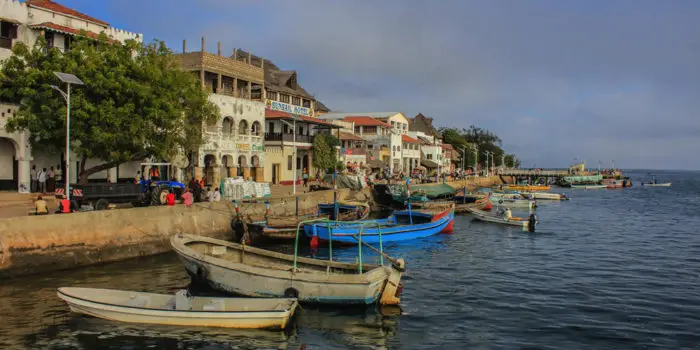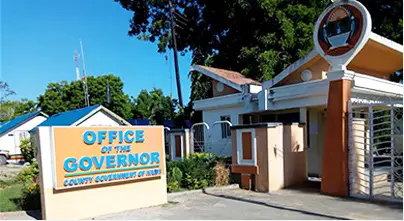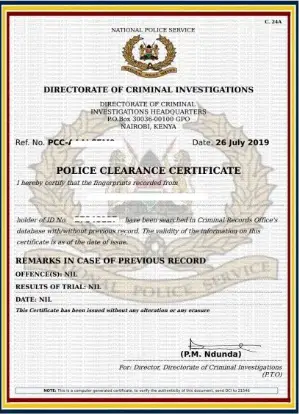Lamu town is part of the Lamu Archipelago and is situated about 212 miles northeast of Mombasa. It is the headquarters of Lamu County and is known for its rich cultural heritage and stunning architecture.
Lamu Town is a UNESCO World Heritage site and is home to the oldest and best-preserved Swahili settlement in East Africa.
The town’s distinctive architectural features, such as intricately carved doorways and enclosed courtyards, showcase the influence of Arabic, Indian, and European cultures.
Lamu Town’s narrow streets and alleyways are also worth exploring, as they offer a glimpse into the town’s fascinating history and culture.
Whether you’re interested in history, architecture, or simply soaking up the local culture, Lamu Town is a must-visit destination.
History of Lamu Town
Lamu Town is one of the oldest and best-preserved Swahili settlements in East Africa, located on the northern coast of Kenya.
It has a rich history that dates back to the 14th century and has been influenced by various cultures, including Arab, Persian, Indian, and European.
Early History
Lamu Town was founded in the 14th century by Arab traders who established a settlement on the island. The town grew in importance as a trading center for ivory, slaves, and spices.
The town’s strategic location on the Indian Ocean trade routes made it a hub for commerce and cultural exchange.
Colonial Era
In the late 19th century, Lamu Town came under the influence of the Sultan of Zanzibar, who ruled the region from his capital in Stone Town.
The British established a protectorate over the region in 1895, and Lamu became part of the British East Africa Protectorate.
The town’s economy shifted from trade to agriculture, with coconut and sisal plantations becoming the main sources of income for the local population.
Post Independence Era
Kenya gained independence from Britain in 1963, and Lamu Town became part of the new nation. The town’s economy continued to rely on agriculture, but tourism emerged as a new source of income.
Lamu’s historic architecture, cultural heritage, and natural beauty attracted visitors from around the world. In 2001, Lamu Old Town was designated a UNESCO World Heritage site in recognition of its unique cultural and historical significance.
Today, Lamu Town remains a vibrant and culturally rich community, with a mix of Swahili, Arab, and European influences. The town’s historic buildings, narrow streets, and bustling markets offer visitors a glimpse into the region’s rich past and present.
Geography and Climate
Geographical Location
Lamu Town is located on Lamu Island, which is part of the Lamu Archipelago in Kenya. The town is situated on the southeastern shore of the island, facing the Indian Ocean. Lamu Island is located approximately 341 kilometers (212 miles) northeast of Mombasa and is accessible by road and sea. The road to Lamu ends at Mokowe Jetty, from where one has to cross the sea channel to reach the island.
Lamu Island is the largest island in the archipelago, with an area of approximately 260 square kilometers (100 square miles). The island is surrounded by other smaller islands, including Manda Island, Pate Island, and Kiwayu Island. The archipelago is located close to the equator, with a latitude of approximately 2.3 degrees south.
Climate
Lamu Town has a tropical climate, with two distinct seasons: a cooler season from June to September and a hot, muggy season from November to April.
The average temperature in Lamu ranges from 22 to 32 degrees Celsius (72 to 90 degrees Fahrenheit) throughout the year. The humidity is high, with an average relative humidity of 75 percent.
Lamu receives most of its rainfall between April and mid-July, with an average annual precipitation of 800 millimeters (31 inches). The rest of the year is relatively dry, with occasional showers. January and February are the driest months.
The climate in Lamu is influenced by the monsoon winds, which blow from the northeast from October to March and from the southeast from April to September. The winds bring cool breezes during the cooler season and hot, humid air during the hotter season.
Overall, the climate in Lamu is pleasant, with warm temperatures and occasional rainfall. However, visitors should be prepared for high humidity and occasional heavy rains during the rainy season.
Culture and Heritage
Lamu Town is a place rich in culture and heritage. The town is known for its unique Swahili culture, which has been preserved for centuries. Here, we will explore two aspects of Lamu’s culture and heritage: the Lamu Cultural Festival and Swahili culture.
Lamu Cultural Festival
The Lamu Cultural Festival is a vibrant celebration of Lamu’s culture and heritage. The festival takes place annually and attracts visitors from all over the world. During the festival, you can witness traditional dances, music, and food.
You can also participate in activities such as dhow races and donkey races. The festival is a great opportunity to experience Lamu’s culture and interact with the locals.
Swahili Culture
Lamu Town is one of the best-preserved examples of Swahili culture in East Africa. The town’s architecture is a blend of African, Arabic, and Indian influences.
The buildings are made of coral stone and mangrove timber and are characterized by inner courtyards, verandas, and elaborately carved wooden doors. The town’s layout is also unique, with narrow alleys and streets that are designed to provide shade and ventilation.
Swahili culture is also reflected in Lamu’s cuisine. The town’s food is a fusion of African, Arabic, and Indian flavors. Some of the popular dishes include pilau, biryani, samosas, and chapatis.
The food is often served with coconut milk, which is a staple ingredient in Swahili cuisine.
Economy of Lamu Town
Lamu Town’s economy has historically been based on the slave trade, but it was abolished in 1907. Today, the town’s economy is primarily driven by tourism and fishing.
Tourism
Lamu Town is a popular tourist destination, known for its beautiful beaches, historic architecture, and vibrant culture. Visitors can explore the narrow streets of the old town, take a boat ride to neighboring islands, or simply relax on the beach.
There are a variety of hotels, guesthouses, and restaurants in Lamu Town to accommodate visitors. Many of these establishments are housed in historic buildings, adding to the town’s charm.
Fishing Industry
The fishing industry is also an important part of Lamu Town’s economy. Fishermen in the area catch a variety of fish, including tuna, snapper, and barracuda. The fish are sold in local markets or exported to other countries.
In recent years, the fishing industry has faced challenges due to overfishing and climate change. However, efforts are being made to promote sustainable fishing practices and protect the local marine ecosystem.
Overall, Lamu Town’s economy is diverse and relies on a combination of tourism and fishing. As a visitor, you can support the local economy by patronizing local businesses and being mindful of the impact you have on the environment.
Attractions and Landmarks
Lamu Town is a UNESCO World Heritage Site that boasts of a rich history and culture. The town has a unique charm that attracts tourists from all over the world.
Here are some of the must-visit attractions and landmarks in Lamu Town.
Lamu Fort
Lamu Fort is a historical landmark that dates back to the 19th century. The fort was built by the Sultan of Oman to protect the town from invaders.
Today, the fort houses a museum that showcases the history and culture of Lamu Island. You can climb up to the top of the fort to get a panoramic view of the town and the Indian Ocean.
Lamu Old Town
Lamu Old Town is a maze of narrow streets and alleyways that are lined with traditional Swahili houses. The town has managed to preserve its architectural heritage, and you can see the intricate carvings and decorations on the doors and balconies of the houses.
The best way to explore the old town is to get a local guide who can take you through the narrow alleys and show you the hidden gems of the town.
Lamu Museum
Lamu Museum is located in a traditional Swahili house that has been converted into a museum. The museum showcases the history, culture, and traditions of Lamu Island.
You can see exhibits on Swahili architecture, traditional crafts, and the history of the slave trade in Lamu. The museum also has a collection of artifacts from the 14th century that were discovered during archaeological excavations in the town.
Transport and Infrastructure
Lamu Town is a key port town in Kenya with a well-developed transport and infrastructure system. The town is connected to other parts of the country by both sea and road networks.
Sea Transport
Lamu Port is an important gateway for maritime transport in East Africa. It is part of the Lamu Port and Southern Sudan-Ethiopia Transport Corridor (LAPSSET) project, which is aimed at improving transport infrastructure in the region.
The port has a capacity of 1.2 million TEUs and is equipped with modern facilities such as container terminals, bulk cargo terminals, and oil terminals.
The Lamu Port is strategically located to serve as a transshipment hub for cargo destined to and from the East African region. It is also expected to boost trade between Kenya and other countries in the region such as Ethiopia and South Sudan.
The port is connected to other parts of the country by a network of roads and railways.
Road Network
Lamu Town is connected to other parts of the country by a network of roads. The main road is the A14 highway, which connects Lamu to other major towns such as Malindi and Mombasa.
The road is well-maintained and is suitable for both private and public transport.
The government of Kenya has also initiated several road projects aimed at improving the road network in Lamu Town.
One such project is the construction of the Lamu-Garissa-Isiolo road, which will connect Lamu to other parts of the country such as Garissa and Isiolo.
The project is expected to boost trade and tourism in the region.
Education and Health Facilities
Schools
Lamu Town has a number of schools that cater to the educational needs of the local population. The schools offer education from primary to secondary levels. Some of the schools in Lamu Town include:
- Lamu Boys Primary School
- Lamu Girls Primary School
- Uhuru Primary School
- Mpeketoni Primary School
- Mokowe Primary School
- King Fahad Academy
- Lamu Academy
All of these schools offer quality education to their students. They have qualified teachers and well-equipped classrooms. The schools also have extracurricular activities such as sports, music, and drama to help students develop their talents.
Hospitals
Lamu Town has several health facilities that provide medical services to the local population. The hospitals offer a range of services from general consultations to specialized treatments. Some of the hospitals in Lamu Town include:
| Hospital Name | Hospital Type | County Name | Hospital Level |
|---|---|---|---|
| Mpeketoni Sub-District Hospital | Government/Public | Lamu | 4 |
| Faza Sub-District Hospital | Government/Public | Lamu | 4 |
| Witu Health Centre | Government/Public | Lamu | – |
| King Fahad County Hospital | Private | Lamu | 4 |
These hospitals have qualified doctors and nurses who provide quality medical care to patients. They also have well-equipped facilities to handle emergencies and specialized treatments.
In addition to hospitals, Lamu Town also has several dispensaries and health centers that provide basic medical services to the local population.
Overall, Lamu Town has a good education and health infrastructure that caters to the needs of the local population.
Frequently Asked Questions
What is Lamu old town known for?
Lamu old town is known for its rich history and culture. It is a UNESCO World Heritage Site and the oldest and best-preserved example of a Swahili settlement in East Africa.
The town is famous for its distinctive architecture, including intricately carved doorways and enclosed courtyards, which exhibit the confluence of Arabic, Indian, and European cultures.
Which is the main community in Lamu?
The main community in Lamu is the Swahili people, who have lived in the area for centuries. They are the largest ethnic group in the region and have a rich culture that is deeply intertwined with the history of the Lamu archipelago.
What is the capital of Lamu?
Lamu town is the capital of Lamu county, which is located in the northern part of the Kenyan coast. It is a small town with a population of approximately 25,000 people.
Is Lamu safe?
Lamu is generally a safe place to visit, but like any other tourist destination, visitors should exercise caution and take necessary precautions to ensure their safety. It is advisable to avoid walking alone at night and to be aware of your surroundings at all times.
What are some popular hotels in Lamu, Kenya?
Lamu has a variety of accommodation options to suit all budgets and tastes. Some popular hotels in Lamu include the Lamu House Hotel, Baytil Ajaib, and Kizingo Eco Lodge. These hotels offer a unique experience that combines modern amenities with traditional Swahili architecture.
What is the history of Lamu Archipelago?
The Lamu archipelago has a rich history that dates back to the 14th century. It was an important trading center for ivory, spices, and slaves, and was a hub for Islamic scholarship and culture.
Over the centuries, the archipelago has been influenced by various cultures, including the Portuguese, the Omani Arabs, and the British. Today, the Lamu archipelago is a melting pot of cultures and a popular tourist destination.




